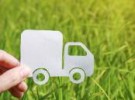The secret to making Australia a green fuel export superpower
E-fuels made from sunlight could do more than cutting emissions from aviation and heavy-duty transport.
Login or signup to continue reading
They could open a new export industry, positioning Australia as a global leader in green fuels and speeding up the world's transition towards net zero emissions.
Petroleum fuels have long underpinned our modern economy.
Each year, Australians use about 50 million tonnes of oil, mostly to keep cars, trucks, planes, and ships moving.
Transport contributed nearly 100 million tonnes of carbon emissions in 2024-25, accounting for 22 per cent of the nation's total emissions.
Electric vehicles are growing rapidly, with about 75,000 sold in Australia over the first three-quarters of 2025. They will help cut demand for petrol and diesel. But planes, ships, and heavy trucks are a different story. They still rely on fuels with high energy density to travel hundreds to thousands of kilometres. For aviation, in particular, there's no scalable substitute for jet fuel yet.
The federal government has just released its Transport and Infrastructure Net Zero Roadmap and Action Plan. The roadmap sets out how transport could decarbonise over the coming decades.
It points to several transition pathways for aviation: battery-powered aircraft, hydrogen-powered aircraft, and sustainable aviation fuels (especially biofuels from crops, wastes, and agricultural residuals).
This is a welcome step in mapping aviation's low-carbon transition. Yet in the long term, the most promising pathway to net-zero emissions in the aviation industry is using e-fuels, not biofuels. As solar electricity keeps getting cheaper, these synthetic fuels could become........






















 Toi Staff
Toi Staff Gideon Levy
Gideon Levy Belen Fernandez
Belen Fernandez Tarik Cyril Amar
Tarik Cyril Amar Rachel Marsden
Rachel Marsden Constantin Von Hoffmeister
Constantin Von Hoffmeister Andrew Silow-Carroll
Andrew Silow-Carroll Mikhail Salita
Mikhail Salita Robert Sarner
Robert Sarner Mark Travers Ph.d
Mark Travers Ph.d
